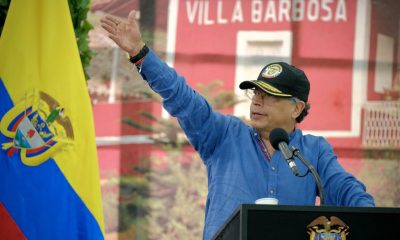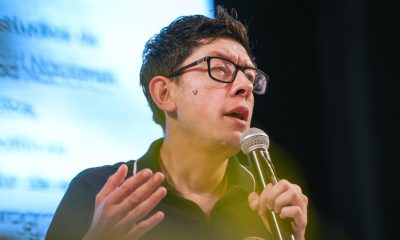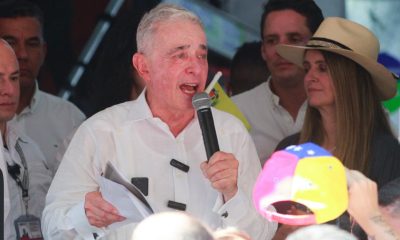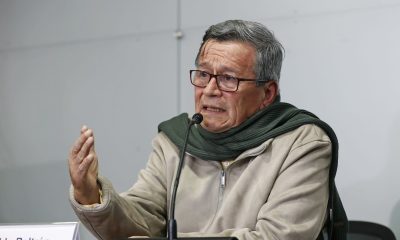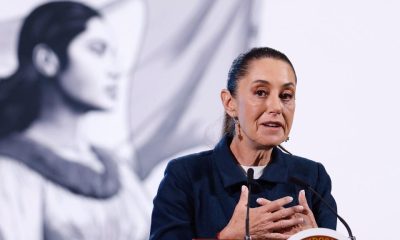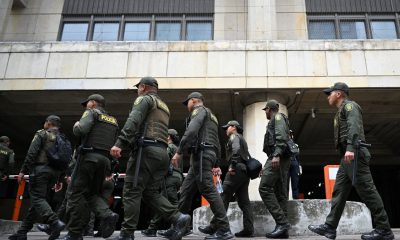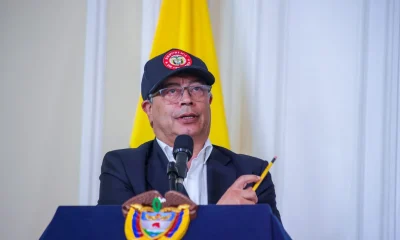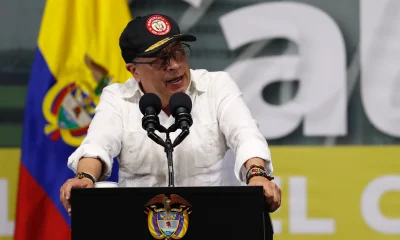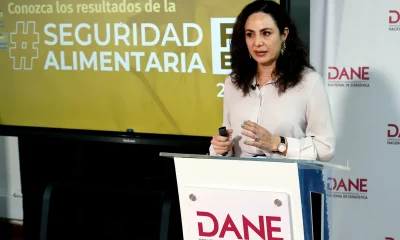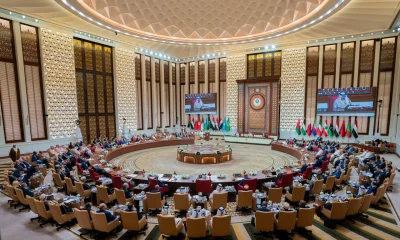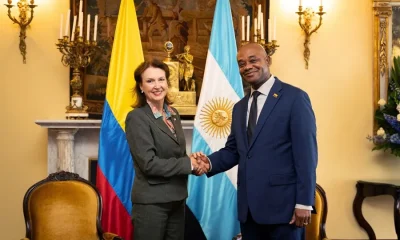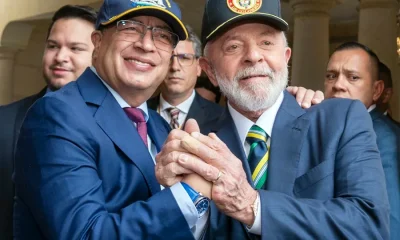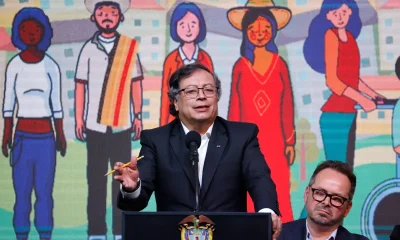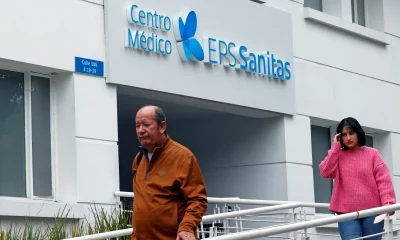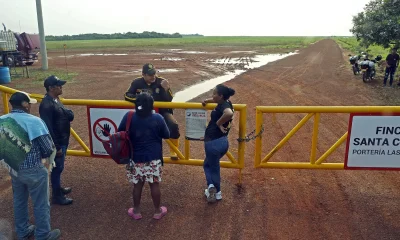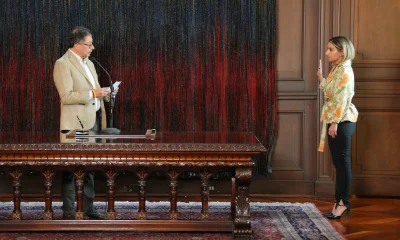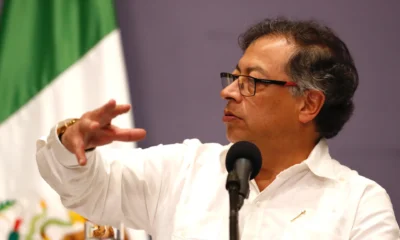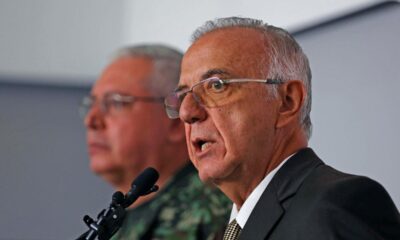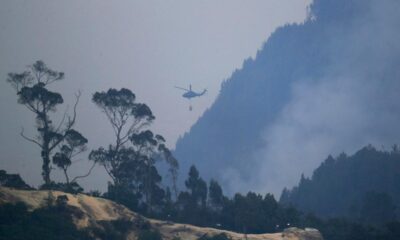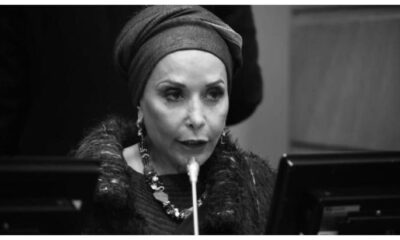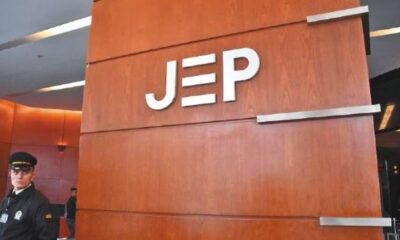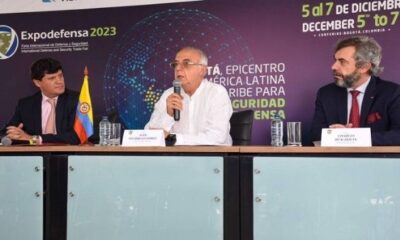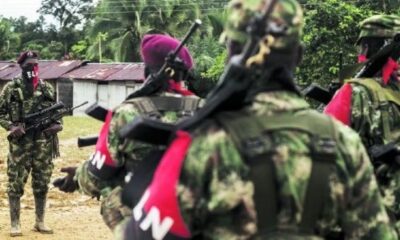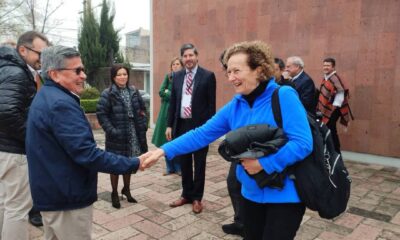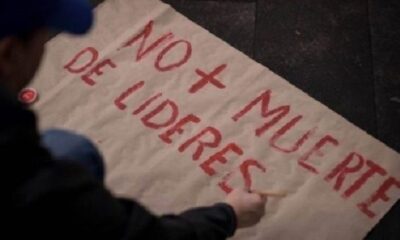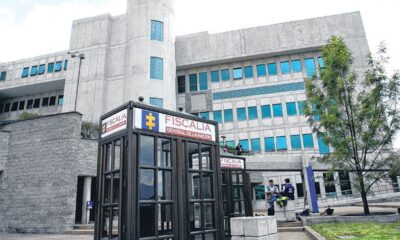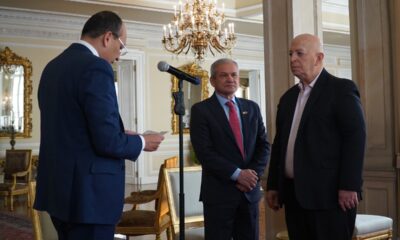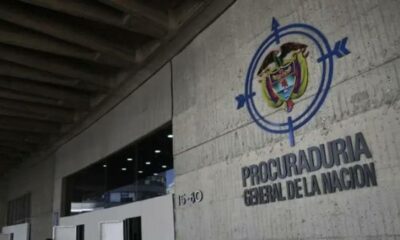International
Colombia backtracks on ceasefire announcement
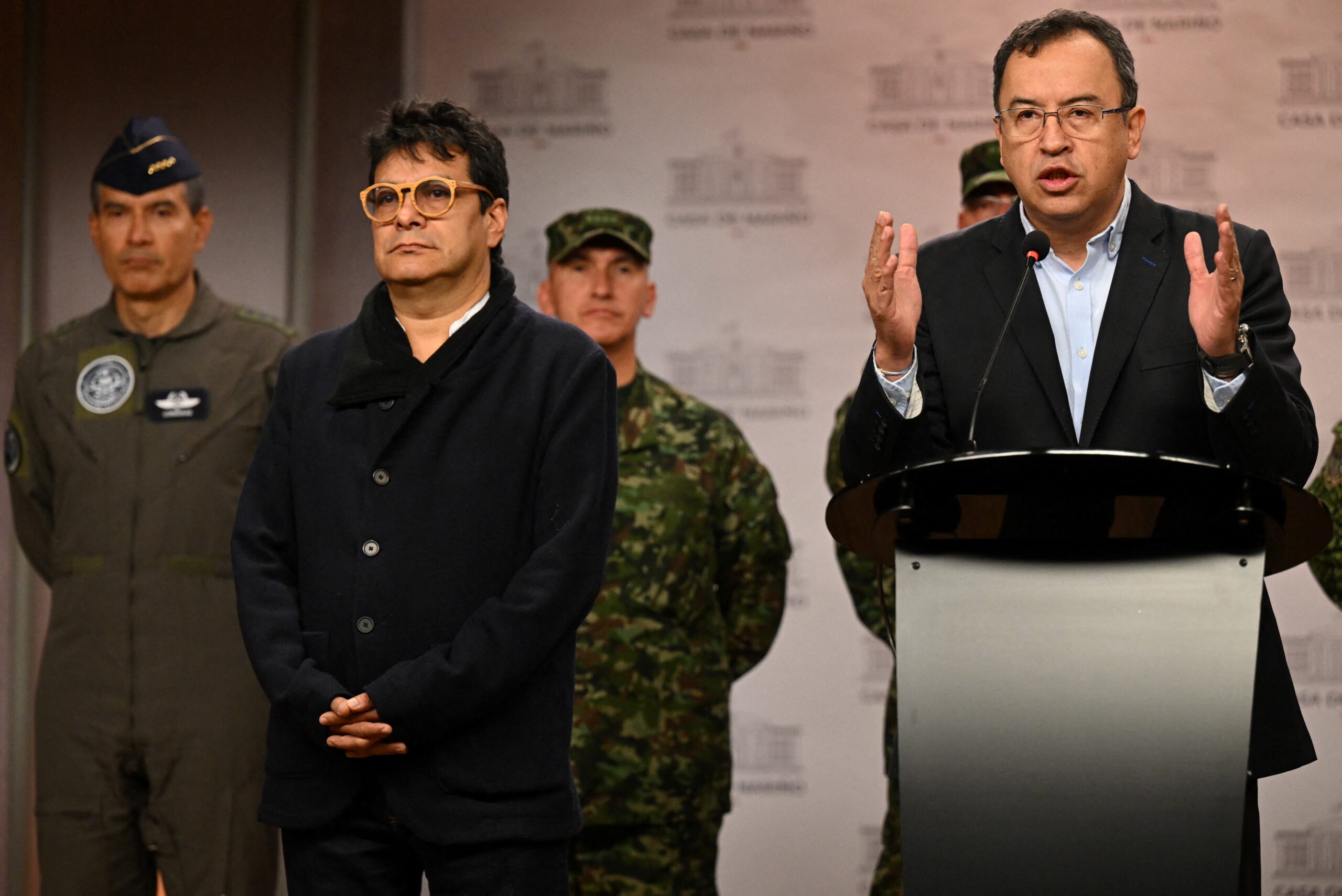
| By AFP |
The Colombian government said Wednesday it was suspending a ceasefire it had announced with the ELN armed group, which denied agreeing to any such truce.
The reversal dampened hopes for an imminent end to decades of violence that have continued to plague the South American country despite a 2016 peace pact that led to the disarmament of the FARC guerrilla group.
Colombian President Gustavo Petro had declared on New Year’s Eve that a temporary truce had been agreed with the country’s five largest armed groups, including the National Liberation Army (ELN), from January 1 to June 30.
The government subsequently said the ceasefire, hailed by the international community, would be monitored by the United Nations, Colombia’s human rights ombudsman and the Catholic Church.
UN Secretary-General Antonio Guterres said it “brings renewed hope for comprehensive peace to the Colombian people as the New Year dawns.”
But then on Tuesday, the ELN said it had “not discussed any bilateral ceasefire with the Gustavo Petro government, therefore no such agreement exists.”
The group added that “a unilateral government decree cannot be accepted as an agreement.”
This prompted the government Tuesday to concede that a proposed ceasefire decree had not yet been finally signed.
And on Wednesday, Interior Minister Alfonso Prada told reporters in Bogota that “we have decided to suspend the legal effects of the decree” in view of the ELN’s stated position.- ‘Total peace’ –
Negotiations between the government and the ELN, the country’s last recognized rebel group, have been under way since November.
A first round of peace talks since Petro came to power in August as Colombia’s first-ever leftist president, concluded in Caracas, Venezuela on December 12 without a truce being agreed.
Another round of talks is due to take place in Mexico, although no date has been set.
Prada said the issue of a ceasefire will be taken up again in Mexico.
Tuesday’s ELN statement said the group was “ready to discuss the proposal for a bilateral ceasefire.”
In pursuit of Petro’s quest to bring “total peace” to Colombia, the government is offering armed groups “benevolent treatment from the judicial point of view,” Senator Ivan Cepeda recently told AFP.
This would be in exchange for “a surrender of assets, a dismantling of these organizations” and agreeing to stop their “illicit economies.”
According to Petro’s tweet, the government had “agreed to a bilateral ceasefire” with the ELN, two dissident splinter factions of the disbanded FARC, the Gulf Clan narco group and the Self-Defense Forces of the Sierra Nevada, a rightwing paramilitary organization.
The ELN is the only group to have refuted the announcement by Petro, who was himself an urban guerrilla member in his youth.
Over 50 years of violence
Negotiations between the government and armed groups which have an estimated combined total of 15,000 fighters, have so far failed to end the spiral of violence engulfing the country.
Colombia has suffered more than 50 years of armed conflict between the state and various groups of left-wing guerrillas, right-wing paramilitaries and drug traffickers.
The Indepaz research institute recorded nearly 100 massacres in Colombia last year.
Despite the peace agreement that saw FARC guerrillas disarm in 2017, armed groups remain locked in deadly disputes over drug trafficking revenues and other illegal businesses, according to the think tank.
Colombia is the world’s largest cocaine producer.
The ELN, created in 1964, had announced a unilateral ceasefire from Christmas Eve to January 2.
Official estimates are that some 3,500 ELN fighters are present in 22 of Colombia’s 32 departments.
International
Fire at substation triggers major blackout in San Francisco
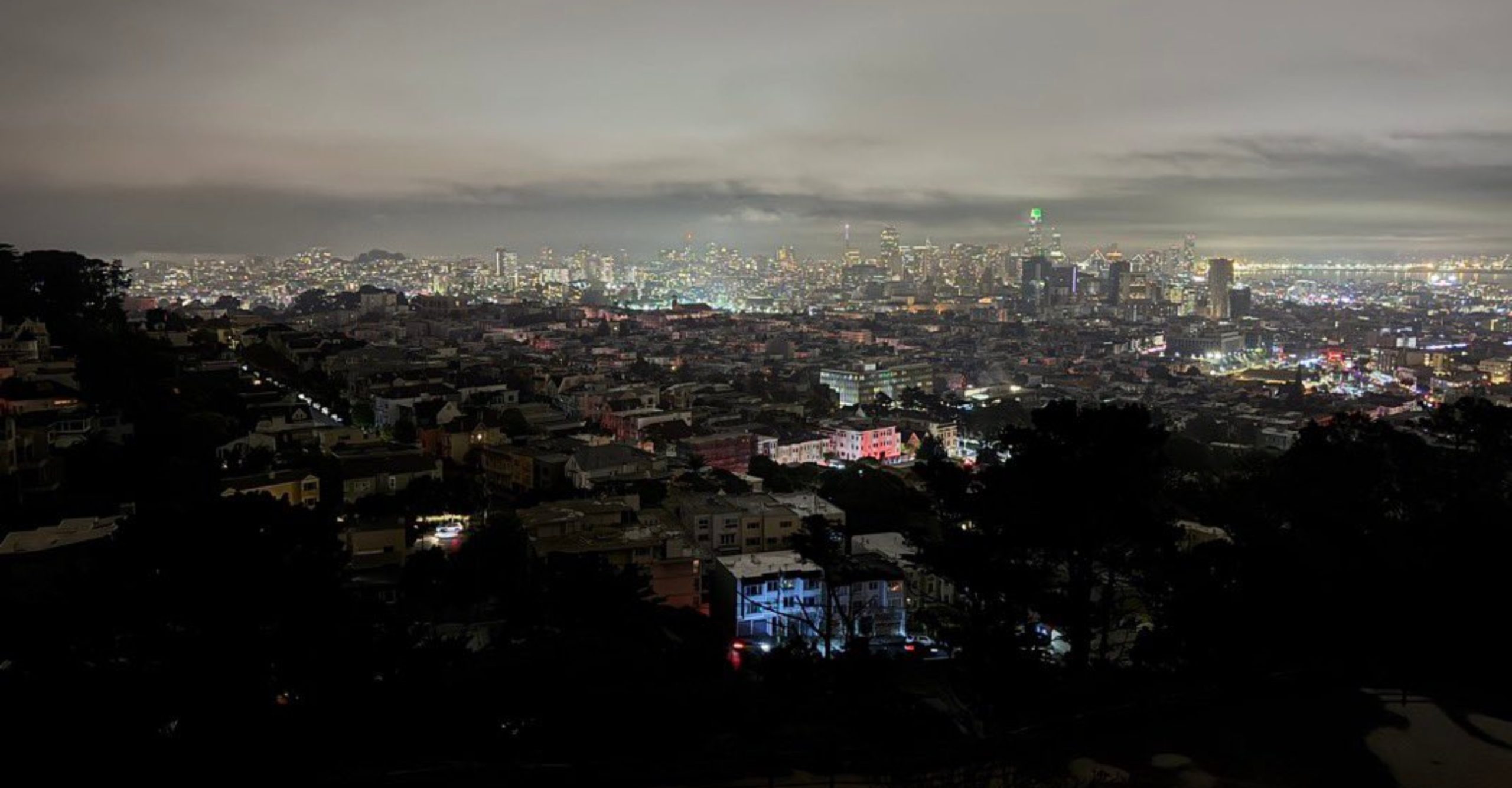
The U.S. city of San Francisco was plunged into darkness Saturday night after a power outage left about 130,000 customers without electricity, although the utility company said service was restored to most users within hours.
Pacific Gas & Electric Company (PG&E) said in a statement posted on X that nearly 90,000 homes had their power restored by 9:00 p.m. local time (05:00 GMT on Sunday), while the remaining 40,000 customers were expected to have service restored overnight.
Large areas of the city, a major technology hub with a population of around 800,000, were affected by the blackout, which disrupted public transportation and left traffic lights out of service during the busy weekend before Christmas, a crucial period for retail businesses.
“I know it’s been a difficult day,” San Francisco Mayor Daniel Lurie said in a video posted on social media from the city’s emergency operations center. “There has been progress, but for those still without power, we want to make sure they are safe and checking in on their neighbors,” he added.
Lurie said police officers and firefighters advised residents to stay home as much as possible. He also noted that officers and traffic inspectors were deployed to manage intersections where traffic lights were not functioning.
The mayor confirmed that the outage was caused by a fire at an electrical substation. Parts of the city were also covered in fog, further complicating conditions during the incident.
As a result of the blackout, many businesses were forced to close despite it being the weekend before Christmas. The sudden drop in shopper traffic ahead of the holiday is “devastating” for retailers, the manager of home goods store Black & Gold told the San Francisco Chronicle.
International
Cristina Kirchner recovering after appendicitis surgery in Buenos Aires
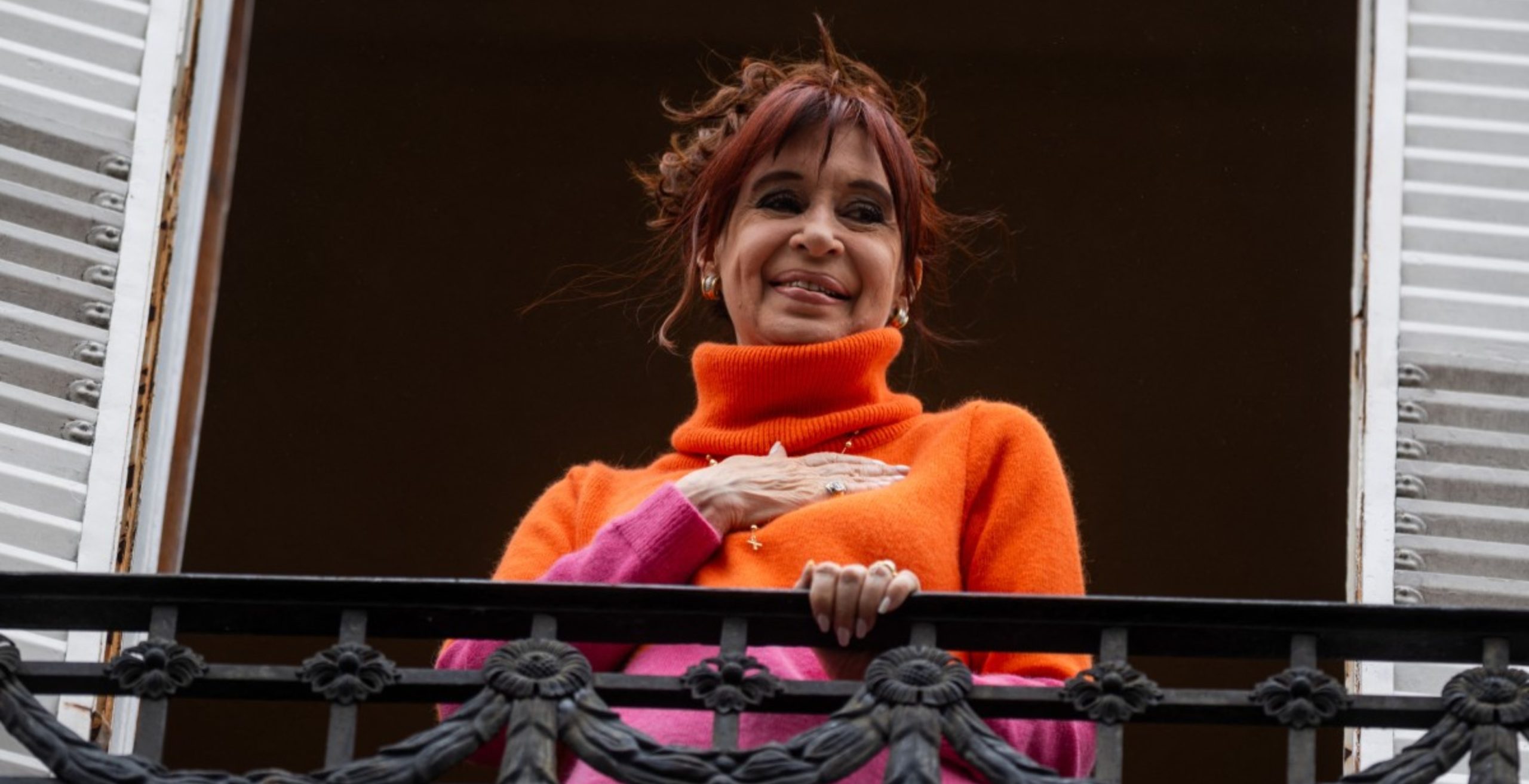
Former Argentine President Cristina Kirchner underwent surgery on Saturday after being diagnosed with appendicitis and is recovering “without complications,” according to a medical report released by the Otamendi Sanatorium.
Kirchner was admitted to the Buenos Aires medical center on Saturday after experiencing abdominal pain. Doctors performed a laparoscopic procedure that confirmed a diagnosis of “appendicitis with localized peritonitis,” the statement said, adding that her post-operative recovery has been progressing without complications.
The former president was transferred to the clinic with judicial authorization from her apartment in Buenos Aires, where she is serving a six-year sentence under house arrest for corruption.
International
Argentina detects first local cases of Influenza A (H3N2) Subclade K

Argentina’s National Administration of Laboratories and Health Institutes (ANLIS) “Dr. Carlos G. Malbrán” has confirmed the detection of three cases of influenza A (H3N2) corresponding to subclade K in the country. These are the first locally recorded cases of this variant, which has become predominant in several countries in the Northern Hemisphere in recent months and is associated with higher transmissibility.
The cases were identified through the National Network of Laboratories and Sentinel Units and confirmed by the National Reference Laboratory of INEI-ANLIS using genomic sequencing techniques. According to health authorities, the cases involve two adolescents from the province of Santa Cruz, detected as part of the Ambulatory Monitoring Strategy for Acute Respiratory Infections, and a child who had been hospitalized in the Autonomous City of Buenos Aires.
In all three cases, patients experienced mild illness and recovered without complications. Officials did not specify whether any of the affected individuals had a recent travel history.
The jurisdictions involved have already launched the corresponding epidemiological investigations and are responsible for ensuring timely medical care for the detected cases. According to the latest integrated surveillance report, the circulation of influenza and other respiratory viruses in Argentina remains within expected levels for this time of year.
-

 International3 days ago
International3 days agoShakira’s El Salvador concerts sell out in hours, fans demand more dates
-

 International2 days ago
International2 days agoPentagon confirms Trump pick for SouthCom as U.S. military pressure grows
-
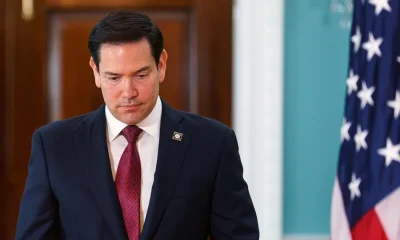
 International5 days ago
International5 days agoRubio rules out 2028 presidential bid if Vance runs
-

 Central America5 days ago
Central America5 days agoArrests and clashes in Tegucigalpa as vote count continues after Honduras election
-

 International3 days ago
International3 days agoTrump moves to reclassify marijuana as less dangerous substance
-
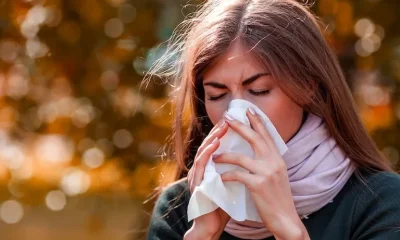
 International2 days ago
International2 days agoArgentina detects first local cases of Influenza A (H3N2) Subclade K
-

 International5 days ago
International5 days agoAuthorities search for armed and dangerous suspect in fatal Brown University attack
-
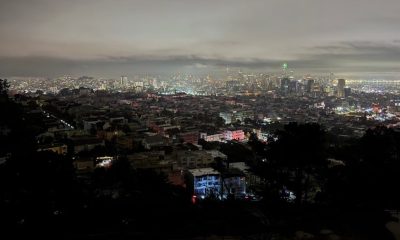
 International18 hours ago
International18 hours agoFire at substation triggers major blackout in San Francisco
-
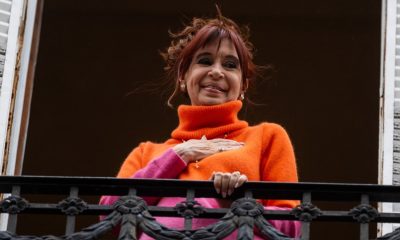
 International18 hours ago
International18 hours agoCristina Kirchner recovering after appendicitis surgery in Buenos Aires





























